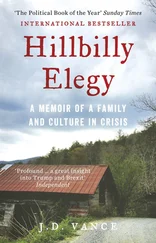Greta Thunberg - Our House Is on Fire - Scenes of a Family and a Planet in Crisis
Здесь есть возможность читать онлайн «Greta Thunberg - Our House Is on Fire - Scenes of a Family and a Planet in Crisis» весь текст электронной книги совершенно бесплатно (целиком полную версию без сокращений). В некоторых случаях можно слушать аудио, скачать через торрент в формате fb2 и присутствует краткое содержание. Город: New York, Год выпуска: 2020, ISBN: 2020, Издательство: Penguin Books, Жанр: Биографии и Мемуары, Публицистика, на английском языке. Описание произведения, (предисловие) а так же отзывы посетителей доступны на портале библиотеки ЛибКат.
- Название:Our House Is on Fire: Scenes of a Family and a Planet in Crisis
- Автор:
- Издательство:Penguin Books
- Жанр:
- Год:2020
- Город:New York
- ISBN:978-0-14313-357-5
- Рейтинг книги:4 / 5. Голосов: 1
-
Избранное:Добавить в избранное
- Отзывы:
-
Ваша оценка:
- 80
- 1
- 2
- 3
- 4
- 5
Our House Is on Fire: Scenes of a Family and a Planet in Crisis: краткое содержание, описание и аннотация
Предлагаем к чтению аннотацию, описание, краткое содержание или предисловие (зависит от того, что написал сам автор книги «Our House Is on Fire: Scenes of a Family and a Planet in Crisis»). Если вы не нашли необходимую информацию о книге — напишите в комментариях, мы постараемся отыскать её.
Our House Is on Fire: Scenes of a Family and a Planet in Crisis — читать онлайн бесплатно полную книгу (весь текст) целиком
Ниже представлен текст книги, разбитый по страницам. Система сохранения места последней прочитанной страницы, позволяет с удобством читать онлайн бесплатно книгу «Our House Is on Fire: Scenes of a Family and a Planet in Crisis», без необходимости каждый раз заново искать на чём Вы остановились. Поставьте закладку, и сможете в любой момент перейти на страницу, на которой закончили чтение.
Интервал:
Закладка:
On the way out of the auditorium, Gabriella tells me about ten-year-old children who are suffering from depression, chronic fatigue and burn-out syndrome, and it sounds like a bad Social Darwinist joke, but I know it’s true. I’ve seen it with my own eyes. She tells me about a girl with Asperger’s who hasn’t got out of bed for two years and who can no longer walk because her Achilles tendons have contracted so much.
And I think, who has the energy to give them a voice?
Who can shout loudly enough so that everyone stops and listens? No one can. Not on their own.
SCENE 78.
Welfare State Child Deluxe
I grew up in a small industrial town in the 1970s and I lacked for nothing. I was a Swedish welfare-state child deluxe. When I look at the children who are growing up today, thirty-five years later – when I see my own daughters – I think that I wouldn’t have stood a chance.
The speed, the volume, the intensity, the demands for profitability and results that permeate everything. The arts school that abandons individual lessons in favour of cost-effective group instruction that once again excludes any child who lacks the capacity to function in a group.
All those whose difference could be transformed into creativity, self-confidence and art, but who now risk disappearing into yet more exclusion and alienation.
Yet another financially profitable failure.
SCENE 79.
Next Door to Seinfeld
In some shabby offices above the Manhattan diner that would later be immortalized in the TV series Seinfeld , a new section of NASA was established in the 1960s. This institute was working on something called ‘the greenhouse effect’.
It has now been over thirty years since its director, James Hansen, testified before the United States Congress and presented evidence confirming that global warming was real.
On 24 June 1988, the New York Times reported on Hansen’s testimony: ‘It was 99 per cent certain that the warming trend was not a natural variation but was caused by a build-up of carbon dioxide and other artificial gases in the atmosphere.’
But who outside the climate and environmental movement has even heard of him? And how many of us know the results and meaning of the research that he and countless others have continued to do in this field?
If we took the climate issue seriously, Hansen would be world famous and each and every Nobel Prize would in some way or other have a connection to the sustainability crisis.
But that’s not how it is.
James Hansen’s prognoses proved right with an unpleasant clarity and yet he is still something of an outcast, overlooked and counteracted by every contemporary US president. He is also a prominent critic of the, in his view, hopelessly insufficient Paris Agreement.
‘Promises like Paris don’t mean much, it’s wishful thinking. The real hoax is by leaders claiming to take action. It’s a hoax that governments have played on us since the 1990s,’ says the former NASA director, who is now professor emeritus at Columbia University.
He has a point.
Because in the thirty years that have passed since his testimony, the world’s CO 2emissions have not decreased one bit. On the contrary, they have gone up by 68 per cent, and despite all the renewable energy – all the newly installed solar and wind power – the world uses more fossil fuels today than in 1988. We are still moving in the wrong direction.
SCENE 80.
Superpowers
When the social media #MeToo campaign started hammering on the surface that feminists have been scratching at for half an eternity, an opening came to light.
A crack in the facade.
Through that opening voices that had sounded for decades suddenly started to be heard, and when you least suspected it, suddenly a small miracle occurred.
Although the miracle was no miracle.
It was only a few joint editorial decisions.
Because when the media chooses to push an issue, as in Sweden with #MeToo, everything changes.
Many within the environmental movement are hoping for a similar breakthrough for the climate.
Although without the scratching on the surface, and 130 years of tiny, tiny steps forward, of course.
We just don’t have that kind of time.
In fact, we have no time at all. 2020 is the year that a revolutionary adjustment needs to already be in full swing.
‘Insight is lacking about the radical changes that are required,’ says Professor Johan Rockström, previously head of the Stockholm Resilience Centre and now director of The Potsdam Institute for Climate Impact research.
We are in a crisis that has never been treated as a crisis.
The reports are many but the reporting is minimal. According to the Swedish pollsters SIFO, the environment had the lowest visibility among political issues in the media in 2016, at the same time as the annual Society–Opinion–Media (SOM) report from the University of Gothenburg once again noted that ‘changes in the climate’ were what worried us most.
The media’s handling of the climate and sustainability issue is nothing less than a total failure. The question of the fate of humanity is – in the best case – reduced to scattered articles, news items or feature sections in which climate news is isolated, while paper editions and news websites are bulging with travel reporting, shopping tips and car articles.
On the radio and TV, debate is what matters, where it’s word against word.
There are no headlines. There are no extra news broadcasts. There are no emergency meetings. There are no public information campaigns.
It’s ‘economy before ecology’, and for that reason the crisis should not be treated as a crisis but instead as an opportunity for new ‘green’ growth. That is what the plan to save the world looks like: a strategy that teaches that alarming reports which could give people insight also risk making those same people collapse into one big ‘ Oh no! So the climate crisis was for real? I had no idea – but now that I know I’m giving up. Because if the Paris Agreement means limitations for me personally then I prefer a full-scale Venus effect, with sea levels rising sixty-five metres, mass deaths, extinction, and a violet-coloured, acid-bubbling ocean! ’
That’s the lie of the land.
News editors must neither frighten, blame nor tell it like it is, because then the rest of us might stop doing all that super-duper climate work that we’ve already started – you know, all that stuff that makes the CO 2content in the atmosphere keep increasing ten times faster than during the greatest mass extinction that ever took place. Oh heavens no, instead we’re supposed to tell a new story – a positive narrative. Something it’s possible to ‘like’ on Facebook.
But you know what?
There already is a new story. And it is so positive that the angels are singing hallelujah and doing somersaults across the sky – because we’ve already solved the climate crisis and we know the solutions are going to work.
The solutions are so brilliant that they’ll solve a great number of other problems all at once, such as growing wealth gaps, mental illness and inequality between the sexes.
With the proviso that these solutions require fundamental changes and a concession or two in return.
Such as a very high CO 2tax.
Such as our overall goal having to be the reduction of emissions.
And to start planting enormous quantities of trees while allowing most of the existing forests to remain so that they hold on to the CO 2they’ve already absorbed. Forests are our salvation. But we must start treating them with the respect they deserve.
Читать дальшеИнтервал:
Закладка:
Похожие книги на «Our House Is on Fire: Scenes of a Family and a Planet in Crisis»
Представляем Вашему вниманию похожие книги на «Our House Is on Fire: Scenes of a Family and a Planet in Crisis» списком для выбора. Мы отобрали схожую по названию и смыслу литературу в надежде предоставить читателям больше вариантов отыскать новые, интересные, ещё непрочитанные произведения.
Обсуждение, отзывы о книге «Our House Is on Fire: Scenes of a Family and a Planet in Crisis» и просто собственные мнения читателей. Оставьте ваши комментарии, напишите, что Вы думаете о произведении, его смысле или главных героях. Укажите что конкретно понравилось, а что нет, и почему Вы так считаете.






![Корнелл Вулрич - Murder at Mother’s Knee [= Something That Happened in Our House]](/books/398097/kornell-vulrich-murder-at-mother-s-knee-somethin-thumb.webp)





